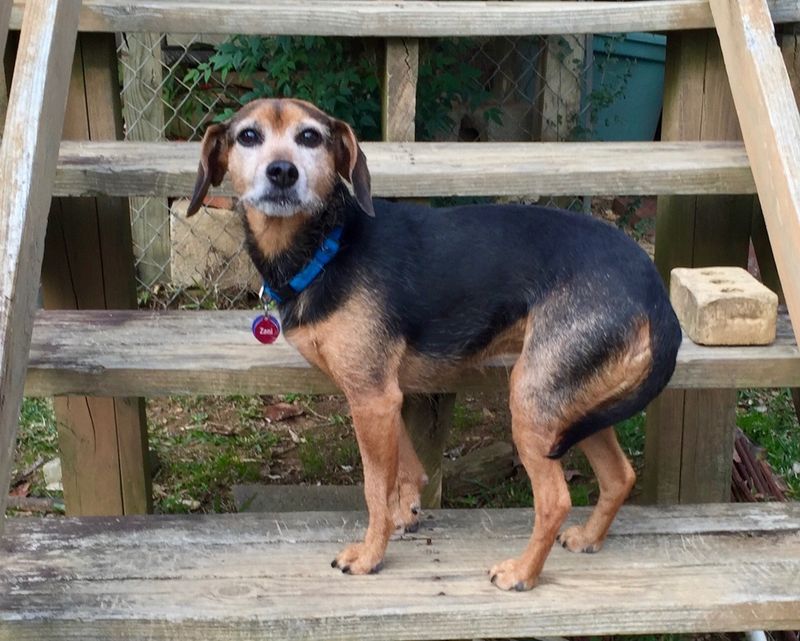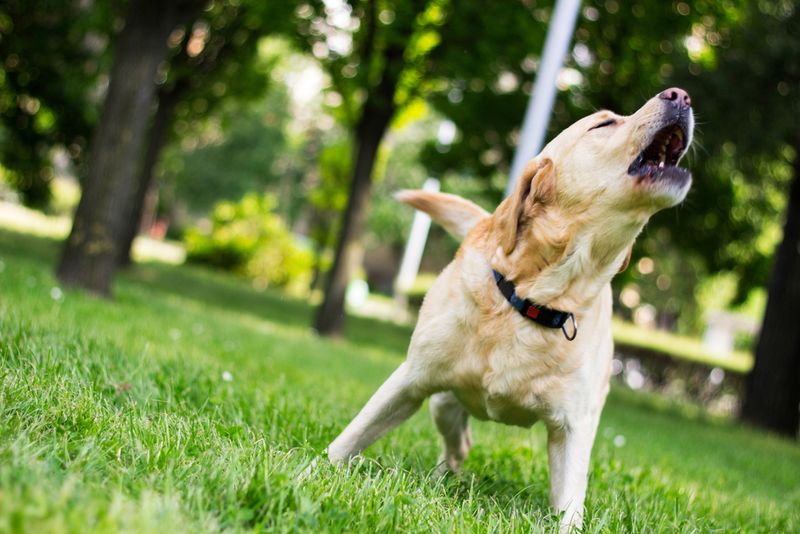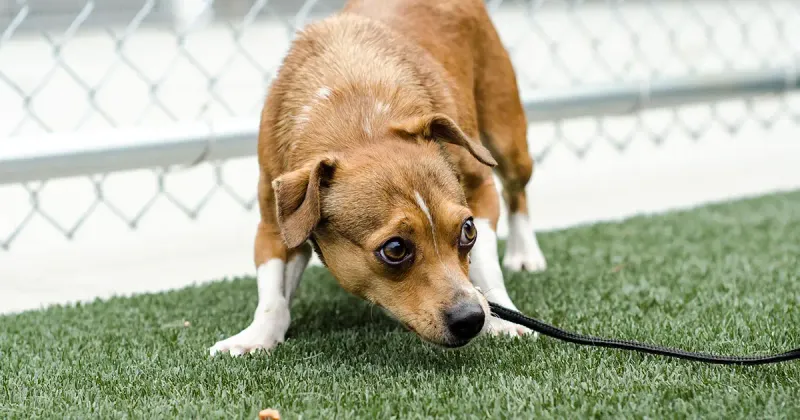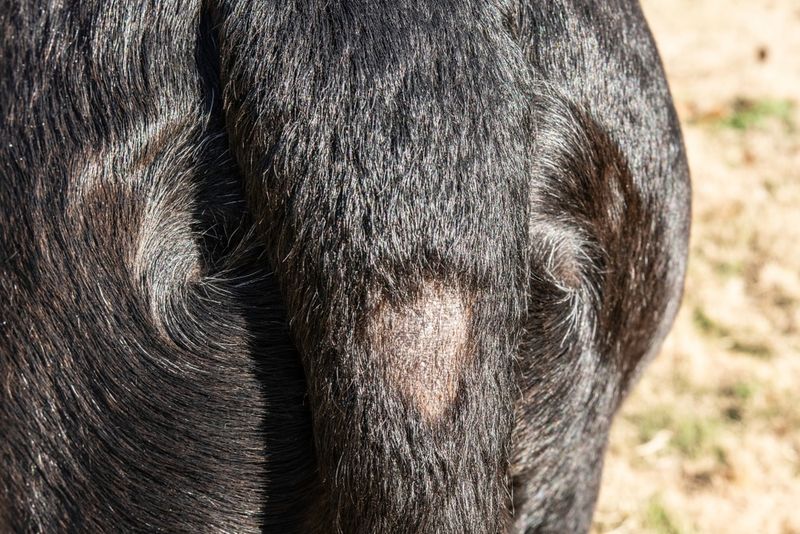15 Subtle Signs Your Dog’s Not Happy At Home And How To Help

Ever caught your furry friend looking a bit down in the dumps? Dogs can’t tell us when they’re feeling blue, but they show it in countless little ways we often miss.
Understanding these hidden signals is key to making sure your four-legged family member truly feels at home. Let’s uncover those quiet cries for help and learn how to turn those sad puppy eyes into tail-wagging joy!
1. Avoiding Eye Contact

Remember when your pup used to gaze adoringly into your eyes? A dog that suddenly avoids eye contact might be feeling insecure or stressed in their environment.
This subtle withdrawal signals they’re uncomfortable or uncertain about their place in your home. Create positive associations by offering treats when they make eye contact. Keep interactions gentle and predictable, gradually rebuilding their confidence through short, positive training sessions.
2. Changed Sleeping Patterns

Suddenly sleeping all day isn’t laziness – it might be depression. Alternatively, a dog that can’t settle or paces at night could be dealing with anxiety or discomfort.
Dogs typically sleep 12-14 hours daily, but dramatic changes warrant attention. Establish a consistent bedtime routine and ensure their sleeping area feels secure. Consider a cozy crate with a comfortable bed or a quiet corner away from household traffic for better rest.
3. Decreased Appetite

Food refusal from a normally eager eater raises immediate red flags. While occasional pickiness happens, consistent appetite loss suggests something’s wrong in their world.
Dogs express emotional distress through their relationship with food. Try hand-feeding temporarily or warming their food slightly to enhance aromas. Consider switching feeding locations to somewhere quieter. If appetite doesn’t return within 24 hours, consult your vet to rule out medical causes.
4. Hiding Or Seeking Isolation

Finding your social butterfly suddenly tucked behind furniture? This retreat speaks volumes about their emotional state.
Dogs naturally seek solitude when feeling vulnerable or overwhelmed. Create a designated safe space with their favorite blanket and toys where they can retreat without being disturbed. Respect their need for alone time while gently encouraging social interaction with high-value treats and gentle praise.
5. Excessive Licking Or Chewing

That constant paw-licking isn’t just a quirky habit. When dogs obsessively groom themselves or chew on their paws, they’re often trying to self-soothe.
This behavior releases endorphins that temporarily calm anxiety. Try providing appropriate chew toys and investigating potential allergies. A veterinary check can rule out medical issues, while puzzle toys might redirect this nervous energy into something positive.
6. Destructive Behavior When Alone

Coming home to shredded pillows isn’t your dog being spiteful – it’s a cry for help. Separation anxiety manifests through destructive behaviors when you’re gone.
Their frantic chewing, digging, or howling releases pent-up stress. Practice gradual departures, starting with seconds and slowly increasing time away. Leave recently worn clothing with your scent nearby. Consider anxiety wraps, calming music, or pheromone diffusers to create a more soothing environment.
7. Tail Position Changes

A happy dog’s tail tells stories – wagging high means joy, while tucked between legs signals fear. If your pup’s usual enthusiastic flag has become permanently lowered, they’re communicating distress.
This body language change often goes unnoticed but speaks volumes about their emotional state. Create positive experiences with gentle play sessions and reward calm, confident behaviors. Avoid situations that trigger the tucked tail response until confidence rebuilds.
8. Excessive Shedding

Finding more fur than usual around the house? Stress triggers abnormal shedding beyond regular seasonal changes.
When dogs feel anxious, their bodies respond physically through increased hair loss. Regular brushing provides bonding time while monitoring this symptom. Introduce calming routines like gentle massage or predictable daily schedules. Fish oil supplements may improve coat health while you address the underlying emotional causes.
9. Lip Licking And Yawning

Those quick tongue flicks and exaggerated yawns aren’t about hunger or tiredness. They’re actually sophisticated calming signals dogs use when feeling uncomfortable or anxious.
Watch for these subtle cues during interactions or when new elements enter their environment. When you notice these signals, reduce potential stressors by creating distance from whatever’s causing discomfort. Lower your voice, avoid direct staring, and move slowly to help them feel safer.
10. Loss Of Interest In Toys

Remember that squeaky duck they couldn’t live without? When favorite toys collect dust, your dog might be experiencing depression or anxiety.
Play is fundamental to canine happiness, and its absence signals something’s wrong. Try introducing novel toys with different textures and sounds to spark curiosity. Participate actively in playtime rather than expecting solo play. Short, energetic play sessions can gradually rebuild their natural playfulness.
11. Excessive Barking Or Whining

That non-stop vocal performance isn’t just attention-seeking – it’s frustration in sound form. Increased vocalization often indicates unmet needs or emotional distress.
Dogs communicate their discomfort through these persistent sounds. Identify triggers by keeping a log of when barking occurs. Increase physical exercise and mental stimulation through training games. Consider teaching a “quiet” command paired with rewards for calm behavior.
12. Stiff Body Language

A relaxed dog moves fluidly, while tension creates a robot-like stiffness. This rigid posture signals they’re perpetually on guard, unable to truly relax at home.
Notice frozen postures, tight facial muscles, or stiff walking patterns. Create predictable routines that build security and confidence. Massage therapy can help release physical tension. Consider body-awareness exercises like walking over different surfaces to help them reconnect with their bodies.
13. House Soiling After Being Trained

Finding surprise puddles from your previously perfect pooch? Regression in house training often signals emotional distress rather than defiance.
This behavior change can indicate anxiety, fear, or feeling unsafe in their environment. Rule out medical issues first with a veterinary visit. Then assess recent changes in household routines or dynamics. Reestablish positive associations with elimination areas and consider temporary anxiety support during retraining.
14. Excessive Grooming Or Scratching

Spot a new bald patch? Compulsive grooming beyond normal cleaning often indicates psychological distress.
Dogs may develop these behaviors to self-soothe when anxious. Check for underlying skin conditions first. Then address potential anxiety triggers in their environment. Provide appropriate distractions like lick mats or puzzle toys. Consider a body sock for severe cases to prevent skin damage while addressing the emotional root cause.
15. Following You Everywhere

Having a furry shadow might seem sweet, but extreme clinginess can signal insecurity. When your dog can’t bear even bathroom separation, they’re showing unhealthy attachment patterns.
This velcro behavior suggests they don’t feel safe alone. Practice brief separations within the home, gradually increasing duration. Create positive independent experiences by offering special treats only when they’re alone. Build confidence through training that rewards calm independence.






